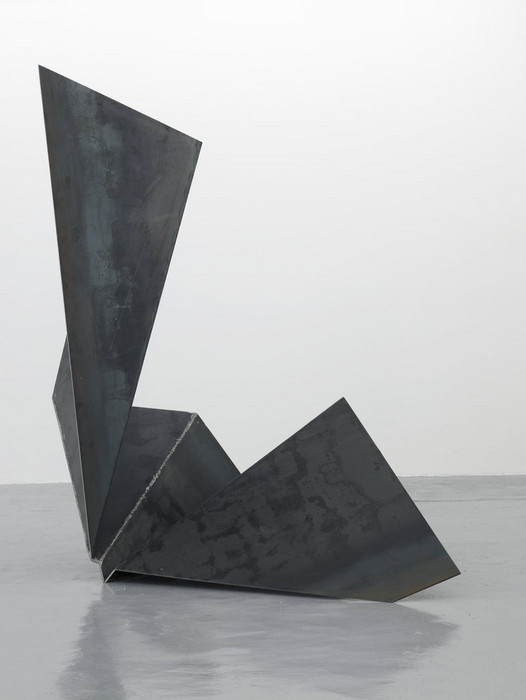Katja Strunz, Nachzeit
21 Jan - 05 Mar 2011
Contemporary Fine Arts is pleased to announce the exhibition “Nachzeit” (Aftertime) with works by Katja Strunz (born in 1970). The works, made between 1998 and 2010, are assembled in Berlin for the first time, and presented as a retrospective.
Katja Strunz’s installations, sculptures, and works on paper grasp and reflect temporal and spatial resonances and historical references, and thus create a kind of “after-effect” with echoes of the past in the present. This fact becomes clear, for example, in the installation Einladung zur Angst [Invitation to Fear], which through its formal proximity to sound objects seems to literally acoustically resonate and recall music that sounded long ago. Other found objects also speak of the past. The installation Untitled (1999-2010) shows an iron flower tendril hanging down, an objet trouvé Katja Strunz found in a cemetery among the decorative remnants of graves that had already been cleared. The wooden triangular construction with which she combines this points to a further artistic appropriation, namely Robert Smithson’s oeuvre, to which she already started referring when she was still at art school. However, Katja Strunz forgoes the mirroring exterior with its promise of infinity so often found in Smithon’s work, and inhibits the reflection of the surface.
Typical for Katja Strunz’s work is the folding of materials: she plays with the act of covering and uncovering, of hiding and revealing. This act of producing insights through reduction and destruction reflects the assumption that the visible surface is deceptive, as well as the desire to penetrate to the interior of things, to achieve the revelation of the medium or support through the reduction to what is really important.
Katja Strunz’s works demonstrate that the fleeting present is steeped in an inescapable past which the artist intentionally evokes. The exhibition titled “Nachzeit” [Aftertime], chosen by the artist, thus refers not just retrospectively to her works created in the past, but also suggests echoes of Walter Benjamin’s notion of Jetztzeit – a moment which strikes the present like lightening, in which all of previous history resonates.
Katja Strunz’s works also reflect the past and thus, as she puts it, “a second present of the past”.
The exhibition is accompanied by a catalogue with an essay by Birgit Sonna.
Katja Strunz’s installations, sculptures, and works on paper grasp and reflect temporal and spatial resonances and historical references, and thus create a kind of “after-effect” with echoes of the past in the present. This fact becomes clear, for example, in the installation Einladung zur Angst [Invitation to Fear], which through its formal proximity to sound objects seems to literally acoustically resonate and recall music that sounded long ago. Other found objects also speak of the past. The installation Untitled (1999-2010) shows an iron flower tendril hanging down, an objet trouvé Katja Strunz found in a cemetery among the decorative remnants of graves that had already been cleared. The wooden triangular construction with which she combines this points to a further artistic appropriation, namely Robert Smithson’s oeuvre, to which she already started referring when she was still at art school. However, Katja Strunz forgoes the mirroring exterior with its promise of infinity so often found in Smithon’s work, and inhibits the reflection of the surface.
Typical for Katja Strunz’s work is the folding of materials: she plays with the act of covering and uncovering, of hiding and revealing. This act of producing insights through reduction and destruction reflects the assumption that the visible surface is deceptive, as well as the desire to penetrate to the interior of things, to achieve the revelation of the medium or support through the reduction to what is really important.
Katja Strunz’s works demonstrate that the fleeting present is steeped in an inescapable past which the artist intentionally evokes. The exhibition titled “Nachzeit” [Aftertime], chosen by the artist, thus refers not just retrospectively to her works created in the past, but also suggests echoes of Walter Benjamin’s notion of Jetztzeit – a moment which strikes the present like lightening, in which all of previous history resonates.
Katja Strunz’s works also reflect the past and thus, as she puts it, “a second present of the past”.
The exhibition is accompanied by a catalogue with an essay by Birgit Sonna.

